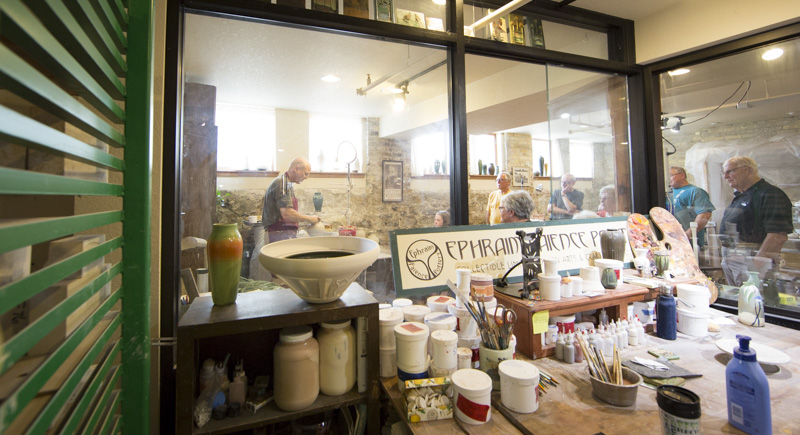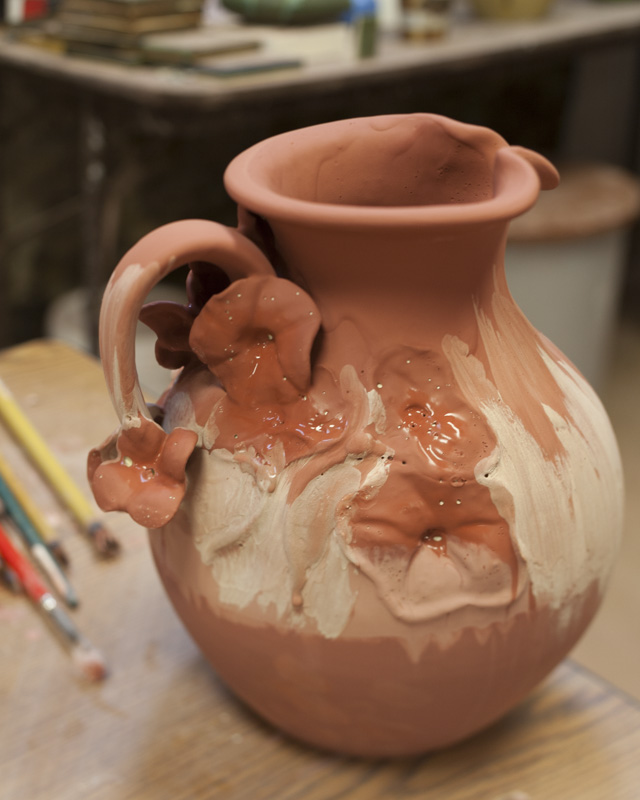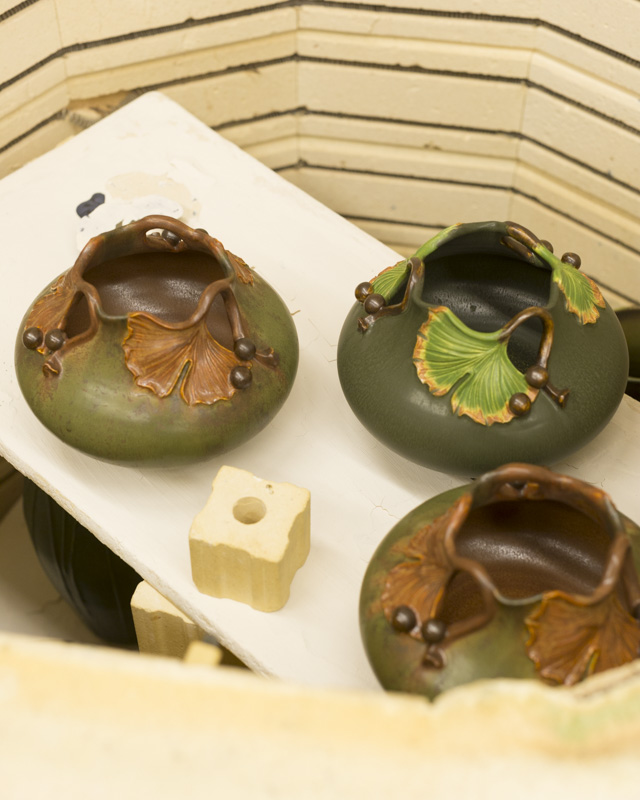A couple of weeks ago a group of people came by the studio for an impromptu tour. One of the women in the tour asked an interesting question: “How do I recognize quality in art?”
Philosophers, art critics, and museum curators have debated this question for centuries and while there is no straightforward absolute – or even any kind of consensus – in defining quality in art, as working artists we constantly evaluate quality and strive for it.
Here are a few observations on quality that we notice:
1. Quality can be intuitively recognized when one is immersed in a particular art from. Quality, by definition, is relative and by looking at lots and lots of pottery it becomes apparent which pieces standout. Articulating why a certain piece is more successful than another can be a challenge. Sometimes the excellence of a piece of pottery comes from sublime form or interesting glaze; often it must be a combination of all elements that come together in a particularly pleasing way.
2. A non subjective aspect of quality is technique. Masterful technique is the solid foundation of quality. Here at the studio, we are constantly striving for excellence in technique. We have very high standards and pieces of pottery come out of the kiln everyday that don’t meet these standards. These pieces either get marked as seconds and sold in our galleries or smashed.
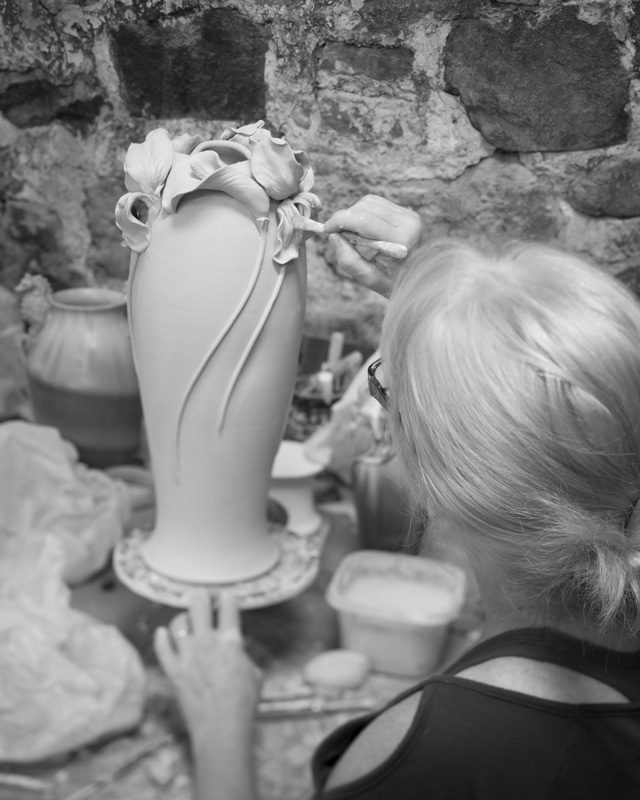
An experimental vase in progress
3. There is a very subjective nature to quality. Some pieces of art will speak in a soulful, magical way to some people and not to others. Personal taste plays a part in qualifying art.
4. Quality transcends trend. There is a longevity and classic-ness to high quality pieces of art that endure. This is the aspect of good art that makes Da Vinci paintings, Bach sonatas, Grueby Pottery and many others as interesting today as when they were made.
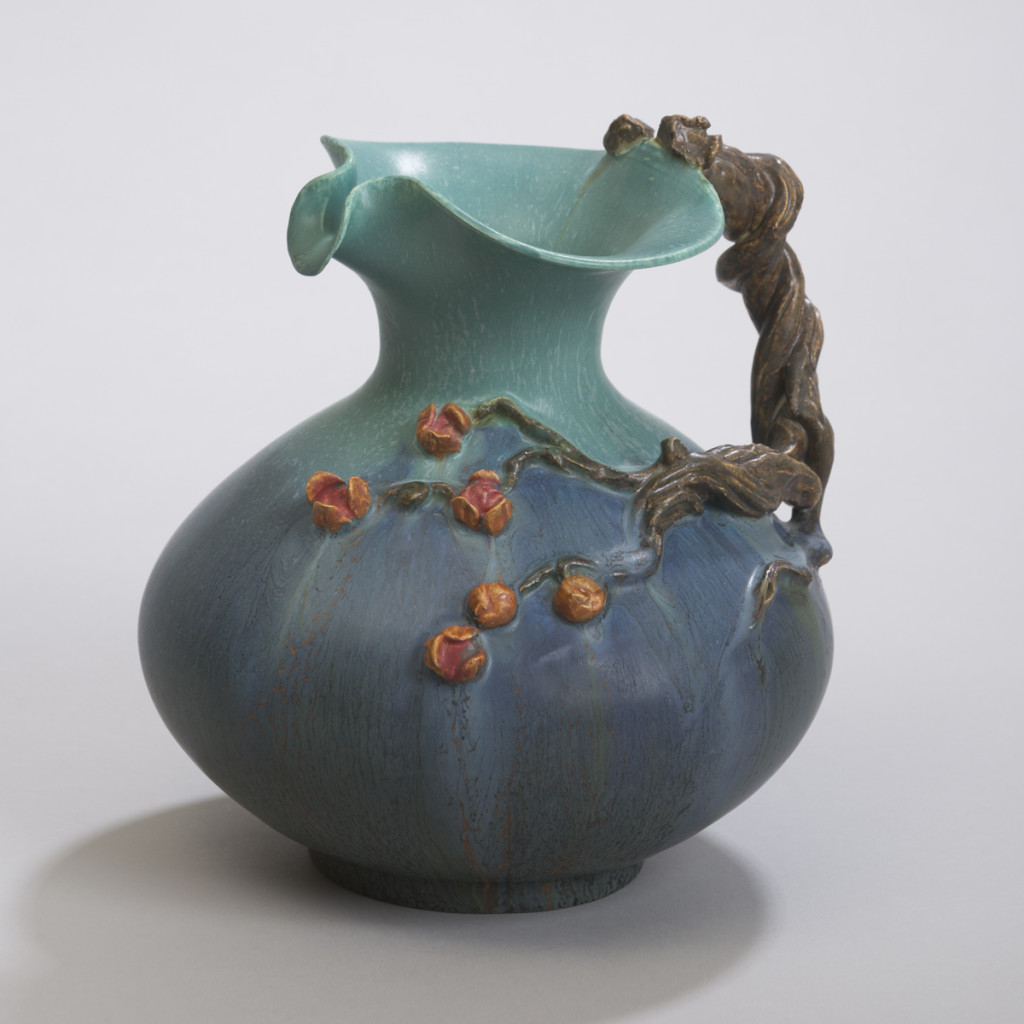
Bittersweet Pitcher 2006 – Retired
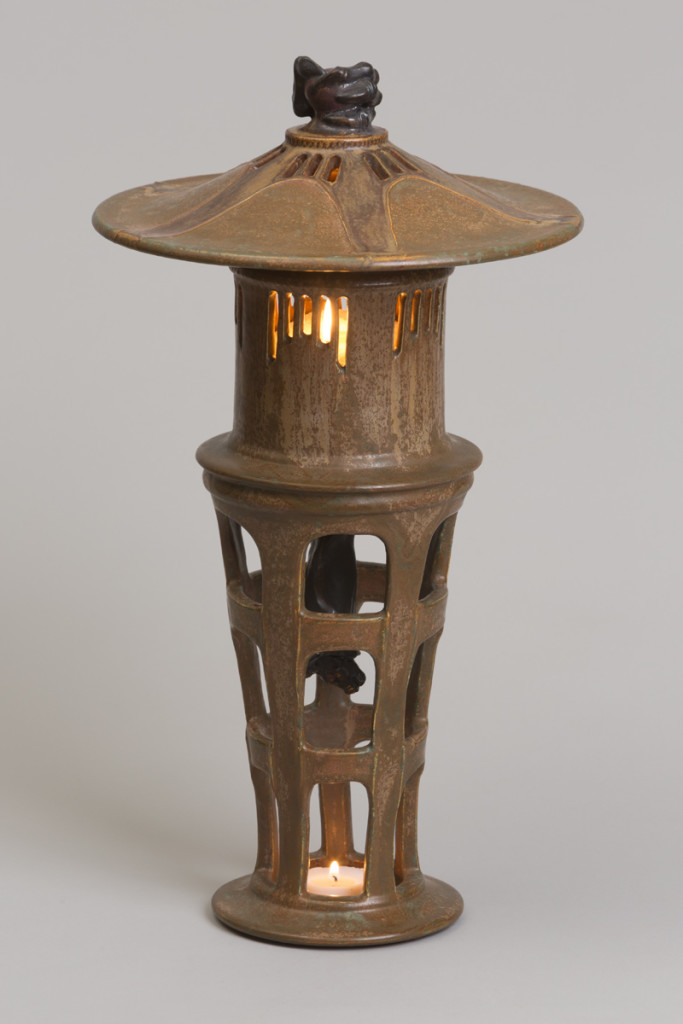
Double Bat Lantern 2012 Pasadena Heritage & Cambria Grand Opening Show Piece – Retired
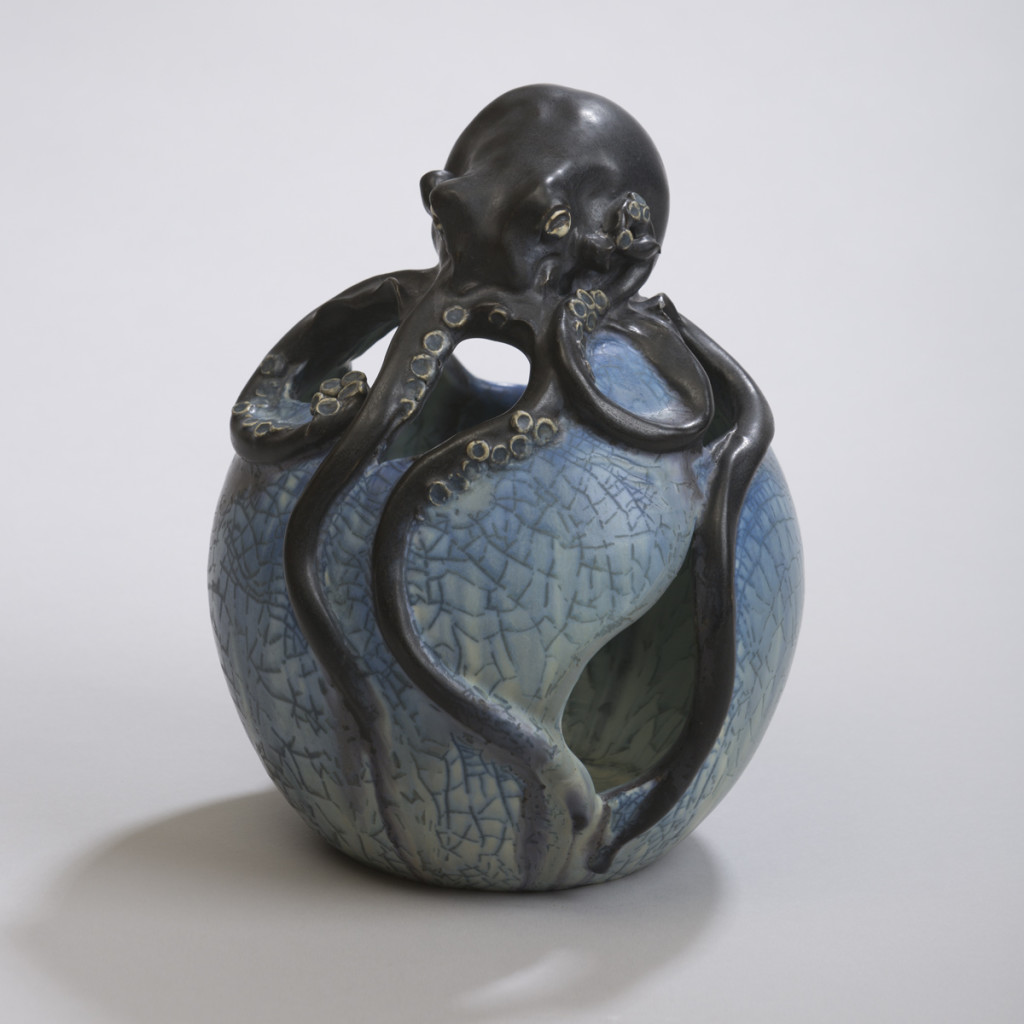
Tidepool Treasure Reserve Edition 2013 – Retired
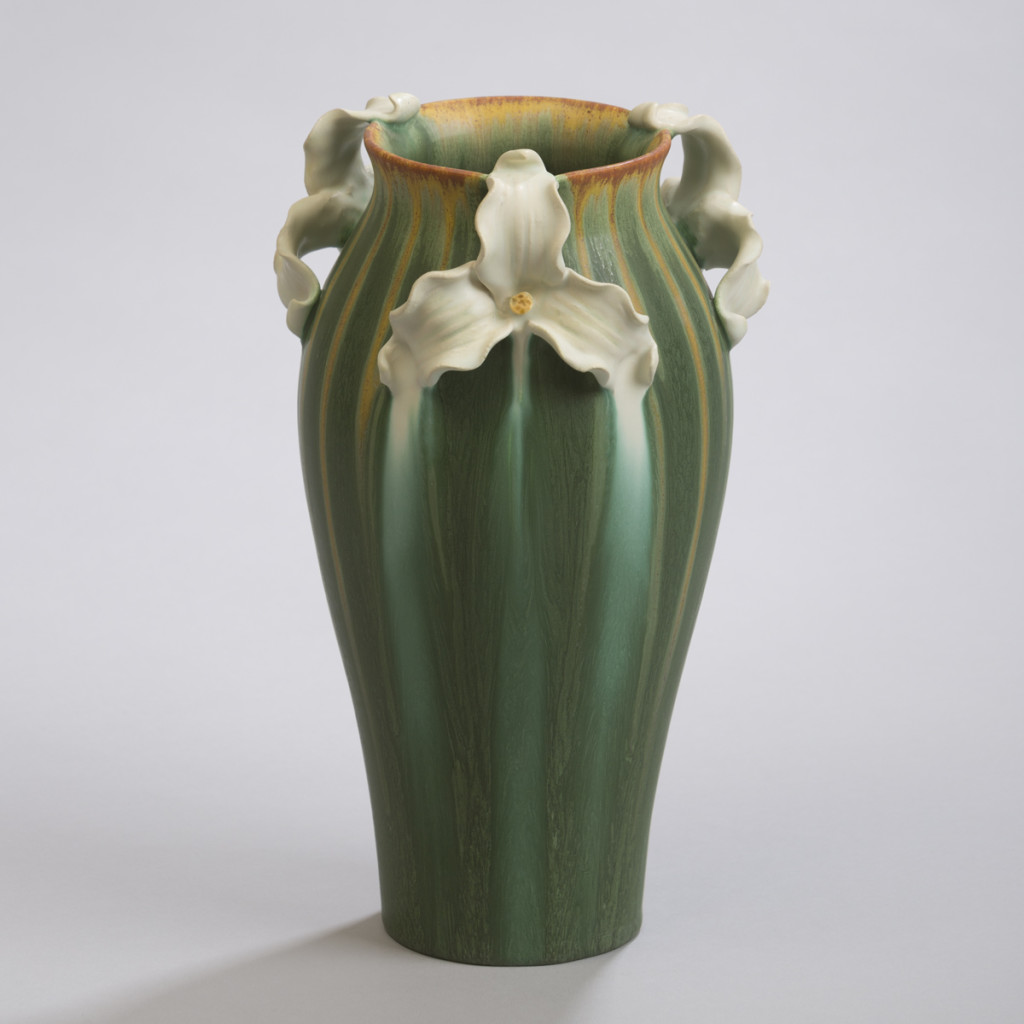
Smaller Trillium Limited Edition Collectors Society Piece 2oo9 – Retired


